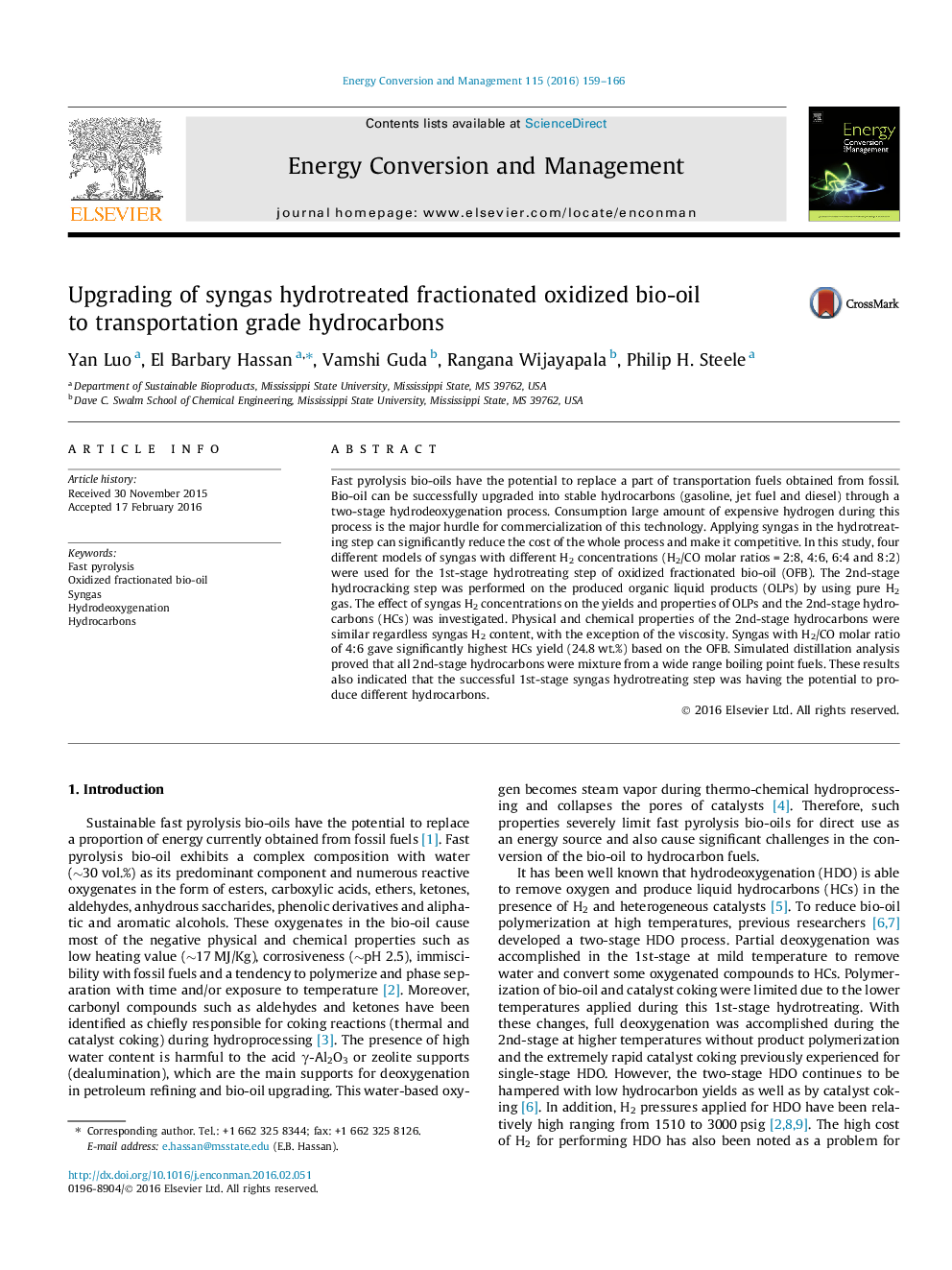| کد مقاله | کد نشریه | سال انتشار | مقاله انگلیسی | نسخه تمام متن |
|---|---|---|---|---|
| 760305 | 1462847 | 2016 | 8 صفحه PDF | دانلود رایگان |
• Hydrotreating of fractionated oxidized bio-oil with syngas was feasible.
• Hydrocarbon properties were similar with all syngas H2/CO molar ratios except viscosity.
• Syngas with H2/CO molar ratio of (4:6) produced the highest hydrocarbon yield.
• The produced hydrocarbons were in the range of gasoline, jet fuel and diesel boiling points.
Fast pyrolysis bio-oils have the potential to replace a part of transportation fuels obtained from fossil. Bio-oil can be successfully upgraded into stable hydrocarbons (gasoline, jet fuel and diesel) through a two-stage hydrodeoxygenation process. Consumption large amount of expensive hydrogen during this process is the major hurdle for commercialization of this technology. Applying syngas in the hydrotreating step can significantly reduce the cost of the whole process and make it competitive. In this study, four different models of syngas with different H2 concentrations (H2/CO molar ratios = 2:8, 4:6, 6:4 and 8:2) were used for the 1st-stage hydrotreating step of oxidized fractionated bio-oil (OFB). The 2nd-stage hydrocracking step was performed on the produced organic liquid products (OLPs) by using pure H2 gas. The effect of syngas H2 concentrations on the yields and properties of OLPs and the 2nd-stage hydrocarbons (HCs) was investigated. Physical and chemical properties of the 2nd-stage hydrocarbons were similar regardless syngas H2 content, with the exception of the viscosity. Syngas with H2/CO molar ratio of 4:6 gave significantly highest HCs yield (24.8 wt.%) based on the OFB. Simulated distillation analysis proved that all 2nd-stage hydrocarbons were mixture from a wide range boiling point fuels. These results also indicated that the successful 1st-stage syngas hydrotreating step was having the potential to produce different hydrocarbons.
Journal: Energy Conversion and Management - Volume 115, 1 May 2016, Pages 159–166
